You Can't Bathe in the Same River Twice
30 November 2005The plot of Balada is taken from Ivan Olbracht’s novel Nikola Šuhaj loupežník (Nikola Šuhaj the Outlaw, 1933; translated and published in English by Northwestern University Press, 2001). Olbracht, a writer associated with Czechoslovakia of the interwar period, was inspired by the people and terrain of Transcarpathia, known to the Czechs as Subcarpathian Ruthenia. The novel, apparently considered one of Olbracht’s best, combines mysticism, magic, and historical events. The character Šuhaj was inspired by a real-life Ruthenian bandit.
The action takes place during the First Republic (1918–1939) in Transcarpathia (present-day Ukraine). This region, famous for its fairytale mountains and rugged ethnic minorities, fascinated many Czech artists and intellectuals of the time. It still fascinates Czechs today. One reason might be that Transcarpathia was Czechoslovakia’s only colonial province and the story depicts the “golden age” of Czechoslovakia. The major characters are Nicholas Šuhaj and his girlfriend Eržika, Mageri the Jew, and the Czech Chief Gendarme. Šuhaj, a Ruthenian (an actual ethnic group that becomes mythologized in the story), is a bandit who robs rich Jews and gives their money to his friends. The action, at least that not related to the love story, stems from the fruitless efforts of the Czech gendarmes to find and arrest Šuhaj. When they finally find him (by bribing one of his friends), it turns out that their bullets do not hurt him because he has been enchanted by a magical forest spirit. Šuhaj dies in the end, of course, because he has angered the forest spirit by attempting to kill her (hoping to attain eternal life, I suppose). Because Šuhaj is overall a sympathetic character, his death is tragic, and the audience is left wondering what will happen to Eržika and his child. I have seen both musicals, and they center on this love story. But a larger parable is being told (graduate student peanut gallery: “ooh, meta-narrative?”), though it is not less Romantic: civilization (the Czechs and Jews) is powerless against the rawness of nature (the Ruthenians and the primeval forest spirit). Seemingly unable to conquer nature or to live by its rules, civilzation retreats. There is a bit of the noble savage here, perhaps. But different rules operate for the two worlds, they are incompatible, and after a short confrontation they go their separate ways.
I had a ticket to the Saturday-night performance (Nov. 19). Though I thoroughly enjoyed the production, it seemed to lack life. This may be due to recent artistic “crises” at the theater. During the Communist period the theater survived only due to the perspicacity of dedicated and gifted actors and directors. (Zdeněk Pospíšil, who directed the original Balada, was one of the major driving forces. He committed suicide in the early 1990s.) However, now in a new facility – “the best theater space in Central Europe,” claims the current artistic director – the theater has slowly lost direction. While this production was very good, I suspect that it was revived in part because for the theater’s posterity rather than artistic reasons. The production emphasized ensemble rather than individuals, though Jan Zadražil (Šuhaj) and Jiří Vyorálek (Mageri the Jew) stick in my memory. The most striking aspect was the music. (I don’t say this only because of my bias, really.) While thoroughly accessible to a wide audience (many of the songs have reportedly become the kind of songs that Czechs sing around campfire), there were various themes for different characters and ideas (leitmotifs) and masterful orchestration for an ensemble of piano, violin, cello, and synthesizer (plus voices of the ensemble and various amplification effects).
Although I don’t have enough information about the original production to say all of this, it seems that a lot of the original performance’s edge and message might be gone. This surprised me because director Vladimír Morávek’s films are quite quirky yet have a hard-to-pin-down sense of weight and are many-layered. Unlike his films, Balada was plain sentimental. While the music implied many nuances in the action, the plot centered mainly on the love story. There was apparently a more pacifist message to the 1975 production (Šuhaj's guitar doubled as a “gun”). This message, and the idea of ethnic repression/intolerance, would have likely been close to the hearts of a 1970s Czech audience than today’s. Uhde, in fact, was a banned author and not even credited as the writer for the initial production. In the 1970s Czechoslovakia was occupied by the Russians and there was anything but an open or civil society. Perhaps the revival’s guns, axes, and self-consciousness--at one point the actors stop to “take a break” because one of the actors is “tired” or “hurt” (after all, one actor says, this is live and the actors are humans)--is meant to resonate vaguely with the situation in Iraq. If so, however, this meaning was incredibly far-removed from the production’s actuality. But the producers were well aware that it was impossible to re-create a legendary production, which was perhaps why they chose the new production’s tag line: You never step twice into the same river.



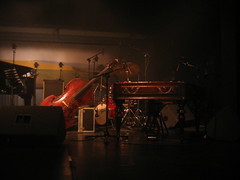
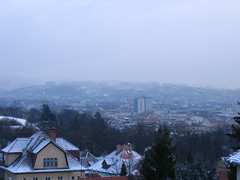
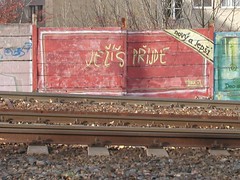
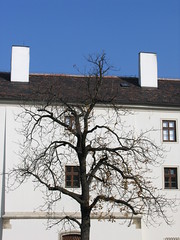

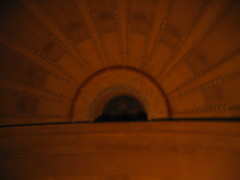
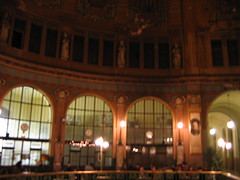

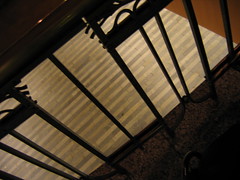



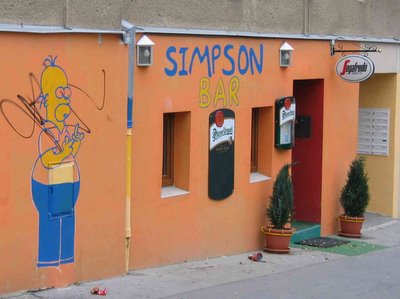



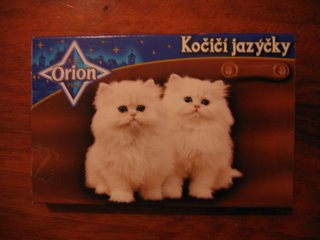



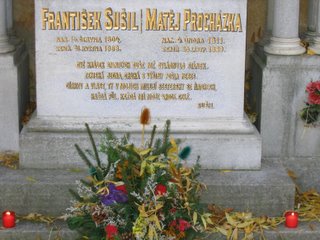


 A graduate student in music and anthropology writing a dissertation about music in Moravia, the eastern third of the Czech Republic. At some point, the Czech Republic's "second city" (that would be Brno) captured my attention, and I've since been blogging about events, arts, music, and other stuff—basically whatever interests me in and around the cityscape. I'm not living in Brno now, but I keep up with the cultural pulse from afar as best I can.
A graduate student in music and anthropology writing a dissertation about music in Moravia, the eastern third of the Czech Republic. At some point, the Czech Republic's "second city" (that would be Brno) captured my attention, and I've since been blogging about events, arts, music, and other stuff—basically whatever interests me in and around the cityscape. I'm not living in Brno now, but I keep up with the cultural pulse from afar as best I can.

